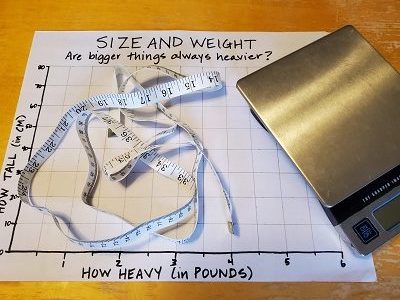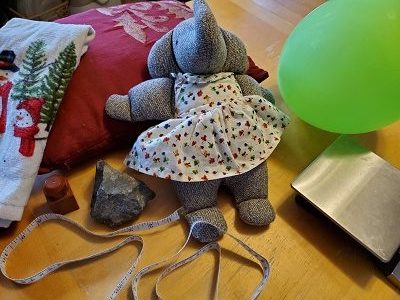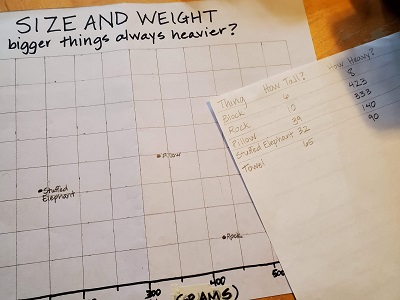
While it feels incredibly basic to adults, learning to use tools of measurement is an important early scientific and mathematical skill, and it can be fun! You can begin working on this with young children using supplies you already have at home. Then while you’re at it, you can incorporate your child’s data into a graph.
Start by gathering the tools of measurement you’d like to use. These can include rulers, measuring tape, seamstress tape, yard sticks, kitchen scales, bathroom scales, luggage scales – whatever you have!

Next, let your kid(s) gather a bunch of random objects to measure. These can include toys, towels, household items, and even your child (how tall are they and how much do they weigh?).
Ask the kid(s) to make a hypothesis, or guess, as to which things will be tallest and which things will be heaviest. Ask them to predict if bigger always means heavier. Our Hypothesis: The biggest things will be heaviest.
Finally, start measuring! Using the tools you’ve gathered, find out how tall and how heavy each of your chosen items turns out to be. Write the information down as you go so you can use it on your graph later.

Once you’re got your data, make a graph! Here we chose to make a line graph in which we mapped points along an x and y axis, with “How Tall” on the Y axis and “How Heavy” on the X axis. If our hypothesis was correct, our data points would fall into a line pattern that would rise diagonally from left to right.
Our graph did not make a line shape! Had we connected the dots, we would’ve had a crazy squiggle. So we were able to disprove our hypothesis: the biggest things are NOT always the heaviest.
(You may notice that we changed the unit of measurement for weight during the experiment. The kids ended up choosing much lighter objects to measure than initially expected, so we found that measuring in pounds was slightly ridiculous. Take this as a lesson in flexibility. Both working with kids and science in general require adaptation as you learn.)
You and your children can learn more about measurements and different kinds of graphs with some of our excellent digital titles through Hoopla!